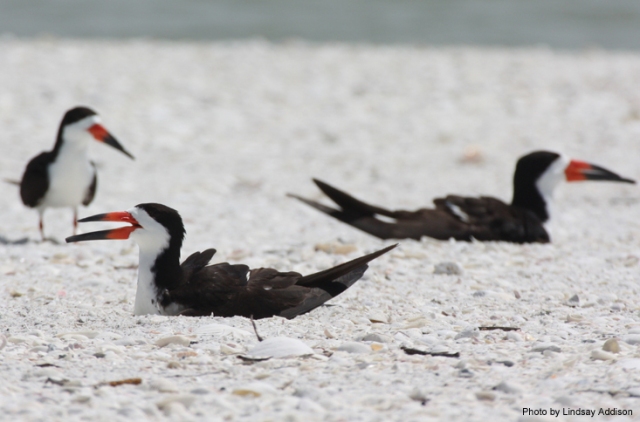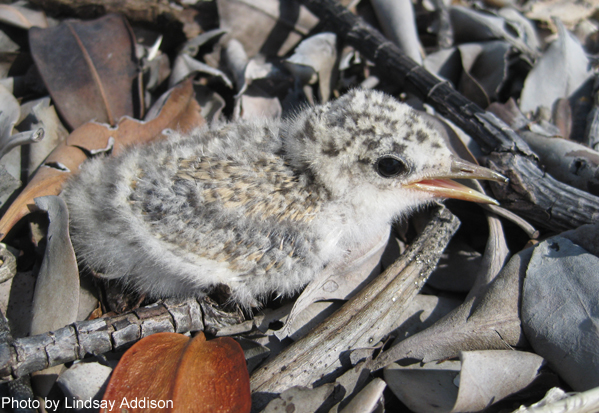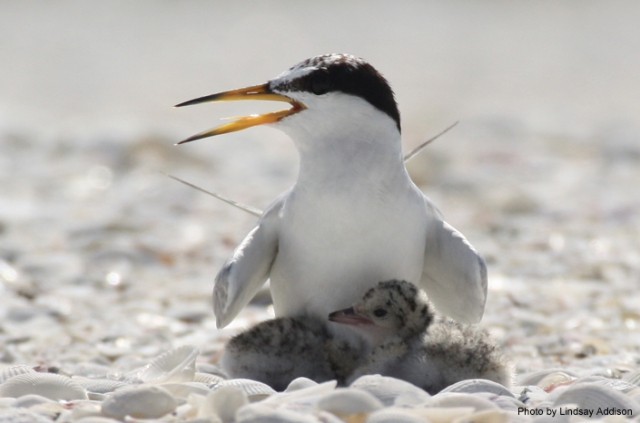On sunny days, you will probably notice that many of the terns and skimmers at the colony are sitting or standing around with their mouths open. If you get a good look at a chick, you will notice they, too, spend a lot of time gaping. Here are an adult Black Skimmer and a Least Tern chick demonstrating this behavior.


Birds do this to keep cool. Opening the mouth increases exposed surface area, which increases heat dissipation. Every little bit of cooling helps, since on a typical day in south Florida, surface temperatures on the beach can exceed 120 F.
Shorebirds use other methods to keep cool. Most obviously, they seek whatever shade they can find, including the sliver of shadow cast in a footprint. The adults also shade both eggs and chicks. Studies with Common Terns have found that eggs left unshaded on a hot day can become unviable in less than 10 minutes. In addition, young chicks are not capable of regulating their own body temperatures until they are a few days old, so adults attend them diligently. That’s why the adults’ presence at the nest scrape or with their chicks is so important, especially in a climate like ours.

Least Terns use a behavior called belly soaking to cool their eggs and chicks off. They briefly land belly-down in the water to get their feathers wet, then return to the nest and drip on their young. Finally, when the chicks get older, they can move around more to find shade. Tern and skimmer chicks both like to huddle under bushes or in the shade of a scarp, while skimmer chicks in particular will move down to the waterline with their parents to take advantage of the cooler temperatures and wet sand.
